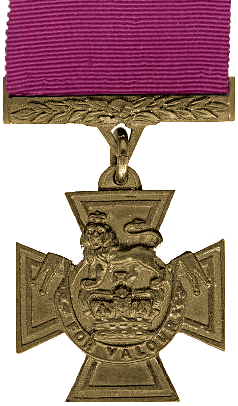Roland Elcock facts for kids
Quick facts for kids
Roland Edward Elcock
|
|
|---|---|
 |
|
| Born | 5 June 1899 Wolverhampton, England |
| Died | 6 October 1944 (aged 45) Dehra Dun, British India |
| Buried |
St Thomas's Churchyard, Dehra Dun
|
| Allegiance | |
| Service/ |
British Indian Army |
| Rank | Major |
| Unit | The Royal Scots |
| Battles/wars | World War I World War II |
| Awards | Victoria Cross Military Medal |
Major Roland Edward Elcock was a very brave English soldier. He won the Victoria Cross (VC) and the Military Medal (MM). The Victoria Cross is the highest award for bravery given to British and Commonwealth soldiers. He was born on June 5, 1899, and passed away on October 6, 1944.
Contents
Roland Elcock's Early Life
Roland Elcock was born in Wolverhampton, England, in 1899. When he was only 15 years old, he tried to join the British Army in October 1914. This was during World War I.
However, he was too young to be a soldier. When the army found out his real age, he had to leave. He then worked as a clerk in Wolverhampton. When he turned 18, he joined the army again.
A Hero in World War I
In 1918, Roland Elcock was 19 years old. He was an acting corporal in the 11th Battalion of The Royal Scots (The Lothian Regiment). This was part of the British Army.
On October 15, 1918, he showed amazing bravery in Belgium. His actions earned him the Victoria Cross.
Elcock's Incredible Bravery
Corporal Elcock was in charge of a Lewis gun team. A Lewis gun was a type of machine gun. Enemy guns were causing many problems and stopping the British advance.
Roland Elcock decided to act on his own. He quickly moved his gun very close to the enemy guns, just 10 yards away. He managed to stop both enemy guns. He also captured five enemy soldiers. His brave actions saved the entire attack from failing.
Later, near the River Lys, he showed courage again. He attacked another enemy machine-gun. He captured the soldiers operating that gun too.
Later Life and Legacy
Roland Elcock continued his military career. He later joined the British Indian Army during World War II. He rose to the rank of major. He passed away in October 1944.
His Victoria Cross medal is a very important part of history. You can see it on display at the Royal Scots Museum. This museum is located in Edinburgh Castle, Scotland.

